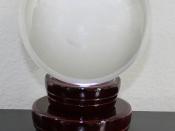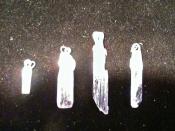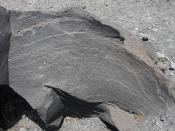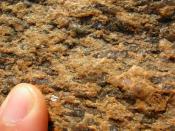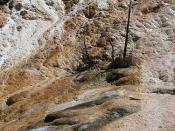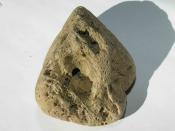Crystal Lab Purpose: To determine the effect of cooling rate on crystal size.
Background Information: In this lab I will be discussing the process of crystal formation. The Lab tied into our topic because we were learning about intrusive and extrusive igneous rocks and how the minerals "Crystals"ÃÂ are formed. Intrusive rock is an igneous rock that is formed below the surface of the earth, the crystals are typically large. On the other hand extrusive rocks are formed when lava cools on the earths surface. The mineral Grain "Crystals"ÃÂ are usually small. Crystals are usually small. Crystals are solid having a distinctive shape because the atoms are arranged in repeating patterns. Igneous rock can be further classified by the types of minerals in them. Basaltic mineral is rich in iron and magnesium. Granite is rich in silicon and oxygen. Andesetic is a mineral composed of granite and basaltic.
Hypothesis: I think that the crystals will form faster when it is on the heat longer than when it is on the heat not as long.
Procedure: Get 4 Slides and label 1-4 Set hot plate on low Using the eye dropper, place one drop of NaCI (salt) solution on the end of the slide, Drop size must be the same for all your slides! According to the times in the following table place the slides on the hot plate with the labeled end hanging off the edge. (Placement of slides on the hot plate must be the same on all slides!) Record the time it takes for the water to evaporate Observe the slide under the microscope and measure the largest square crystal.
